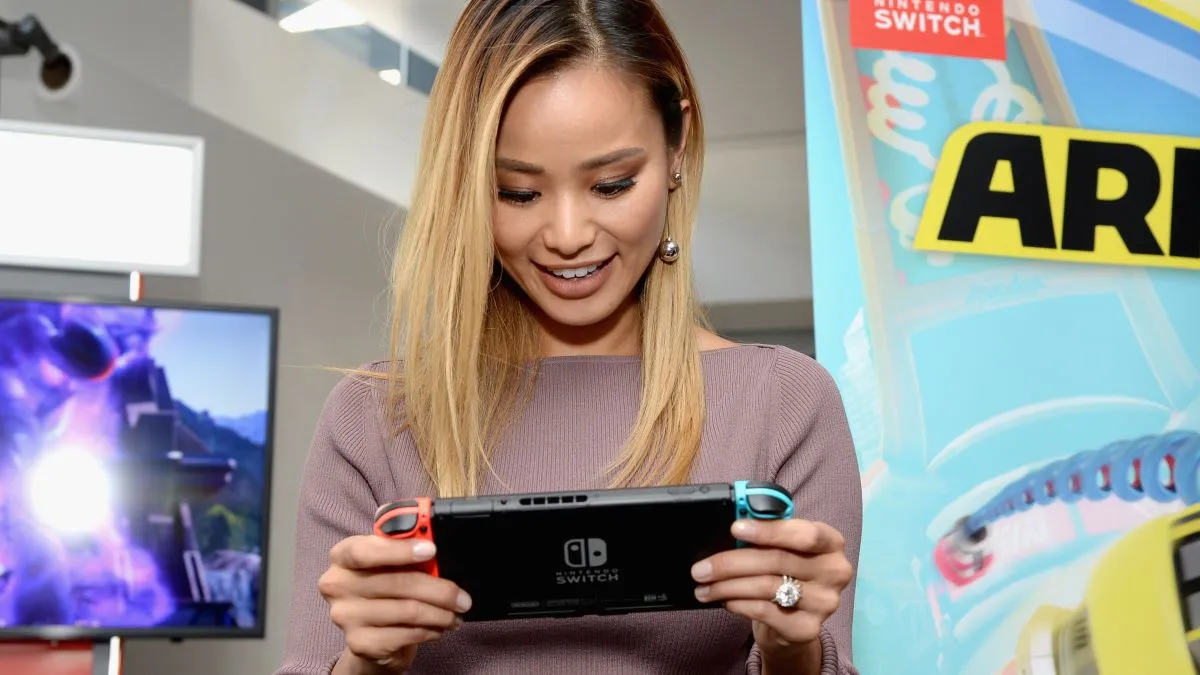The Nintendo Switch is on track to becoming the best-selling games console ever. The current King is Sony’s mighty PlayStation 2, which shifted 155 million units over its lifespan. The Switch is currently at roughly 140 million, so the hybrid console should take the crown sometime in early 2025.
All of which leaves its successor with some enormous shoes to fill. The Nintendo Switch 2 has not yet been officially unveiled but appears to be targeting a Q1 2025 launch, so will be revealed in a Nintendo Direct sometime later this year. Nintendo’s veil of secrecy means we don’t know much about it, save for rumors that a demo console was shown running a “souped up” Tears of the Kingdom behind closed doors at GamesCom 2023.
Given the Switch’s success, a simple and conservative upgrade to it would be the logical next step for Nintendo. Keep the form factor but give us a nicer screen, better specs, controllers that don’t drift, and so on. We fully expect the Switch 2 to follow this philosophy, but Nintendo’s gonna Nintendo and we doubt they’ll be happy with mere iteration.
So, if they want to do something that no other console manufacturer is doing, they need to bring back one of the company’s most technically brilliant achievements.
Back to 2011
Last week I took a long-distance bike ride. My Steam Deck tends to live at my side but on this trip I had to pack light. So I dug around in my desk drawer and fished out my trusty New Nintendo 3DS XL, complete with an unplayed copy of 2011’s Super Mario 3D Land. After a hard day of cycling it was time to unwind with some gaming and, minutes after loading up this wonderful platformer, my jaw was on the floor.
In the decade-plus since I’d last played my 3DS I’d forgotten just how incredible the glasses-free 3D stereoscopic feature looks on the system. It adds depth and vibrancy to the graphics and games like 3D Land that are designed for it leverage the feature to do things you couldn’t on a 2D display. On revisiting it I can put my hand on my heart that, to some degree, stereoscopic visuals like this are more immersive than anything I’ve seen from highfalutin’ ray-tracing on Sony and Microsoft’s systems.
So, if Nintendo wants to stand out from the crowd again, the Switch 2 needs a 3D-capable screen. Imagine putting together Tears of the Kingdom‘s devices in 3D, a next generation of Mario Kart in which you can feel the speed, or exploring the intricacies of an Animal Crossing: New Horizon house?
However, judging by the research I’ve done for this article, many gamers would rather saw off their thumbs than crank up that 3D slider. So here’s why those people are wrong.
Why 3D needs to come back
Many naysayers’ opinion of 3D is based on the original 3DS model released in 2011, which required the console to be held at the right distance and angle to be viewed properly. But, by the time of the New Nintendo 3DS XL in 2014, the tech had been refined into “Super Stable 3D” which detected the angle the screen was being viewed from and adjusted the image to compensate. Even this isn’t perfect, though in general, it provided a stable and vivid 3D image.
But glasses-free stereoscopic 3D screens have come a long way since 2014. Acer’s “SpatialLabs” line of gaming hardware launched last year and features the modern iteration of the 3DS tech, now leveraging both eye and head tracking to produce an even more stable 3D image. A Switch 2 leveraging this mature 3D tech would produce stunning graphics that are impossible for the PlayStation 5 and Xbox Series X|S, all achieved on lower-spec hardware. This feature would also improve classic Switch titles via 3D patches, breathing new life into older games.
A reasonable counterargument is that the Switch 2 will likely be a hybrid console like its predecessor, meaning any 3D effect would be lost when outputting to a regular television or monitor. There’s no obvious way around this problem (unless Nintendo releases their own 3D glasses, which is vanishingly unlikely), but strict parity between TV and handheld mode hasn’t been a priority for Nintendo in the past so why should it be now? Plus, even on the 3DS, the stereoscopic mode was optional so as not to exclude players without good binocular vision.
In addition, for a surprising amount of players the Switch is solely a handheld device and rarely if ever docked (and the popular Lite model is handheld only). So, any system function that caters to handheld players only will see a lot of use.
It’s also worth remembering that Nintendo has literal decades of R&D in stereoscopic gaming dating back to 1987’s Famicom 3D System, the Virtual Boy, and an unreleased GameCube attachment. The company is clearly passionate about the tech and, with the Steam Deck and its ilk nipping at the Switch’s heels, what better time to reintroduce a feature no other gaming company is pursuing?
So c’mon Nintendo. You love to surprise us, and with the 3DS itself now having its store and online features shuttered, this hugely impressive tech should live on in the Switch 2.
